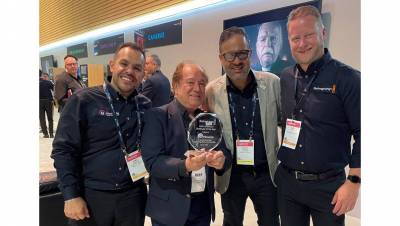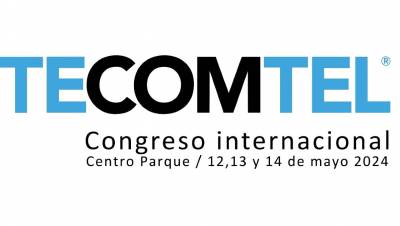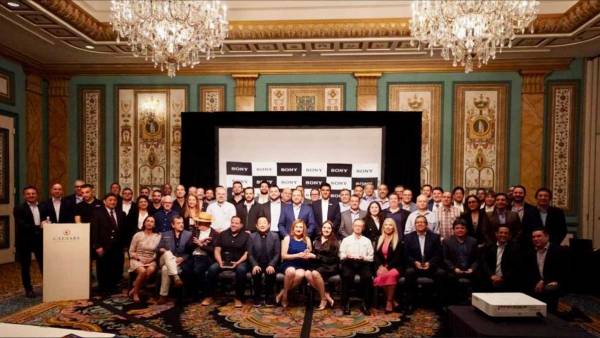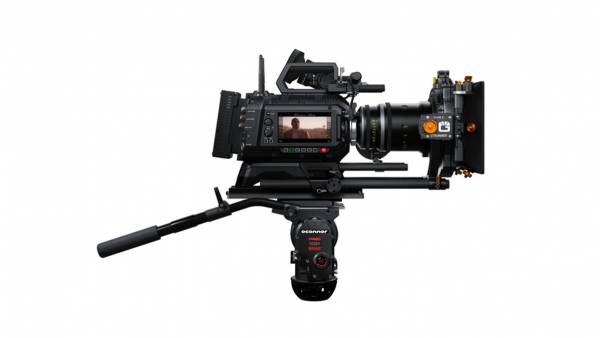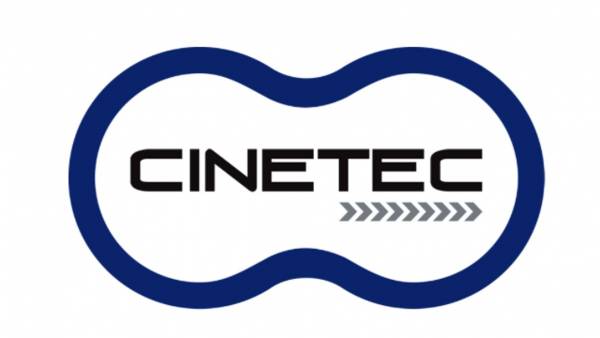Curtains with LEDs
Adrian Morel
Adrian Morel
By: Adrian Morel*
When it comes time to decide between selecting or acquiring an outdoor or indoor LED display, or virtual versus real pixel pitch , the answer seems easy, but there are a few details that need to be taken into account. At first glance, many think that the difference between indoor and outdoor screens is simply higher or lower light output, partly if it is, but there are other issues as well. Others think that a virtual resolution is equivalent to a real or similar one and that deserves its pertinent clarifications.
The industry classifies virtual only
Importantly, suddenly and without warning, the LED display industry has decided to rename or reclassify its products without communicating it to its customer. That is, a couple of years ago, the industry handled only pixel pitch terms in real millimeters. Nowadays, it seems that marketing or communication people have advised LED screen entrepreneurs to refer to them only in virtual terms, which is not the same as real pixel pitch.
This lack of pre-notice or unclear communication is not a happy situation, because when we are reading on the Internet that a screen has 7 mm of resolution, to tell the truth, it would have to be clarified that that same screen is 7 mm virtual and 14 mm real (which is not the same as 7 mm real). Although the difference seems subtle, this confuses the buyer because one thing is being offered for another.
For this reason, the best way to know if we are choosing a virtual or real screen is to count the physical LEDs per square meter. This information is basic and can be found in any brochure.
Advantages and disadvantages of virtual vs. real
The emergence of virtual models has significantly improved the resolution of screens. Such technology can basically come in two forms.
1.Double image sweep
2.Incorporation of an additional LED.
Double image sweep
The double scan reads twice instead of once and as you already know the video is a succession of images in which the resolution is improved when more frames are played per second. For example, in the case of 35 mm film that normally has 24 frames per second, it would be read electronically at 48 frames per second. The PAL system goes from 25 to 50 frames per second, and finally, the NTSC system from 30 to 60 frames per second.
This double-scan system is an incredible improvement for the human eye, as a 20 mm screen, which normally at 20 meters already looks good, with a virtual resolution, looks as if it were a resolution of 10 mm. That is, at the same distance better resolution.
The million-dollar question would then be on what terms does it look best? For example, if we compare side by side a real 20 mm screen with a virtual 10 mm screen we can say that in terms of colors there is no big difference, because both receive 4.4 trillion colors, in the case of first line or recognized brand screens. In terms of comparison of contours, there if we can say that the difference is noticeable being the virtual one with the highest definition. If we compare letters or tiny details, the difference is incredibly staggering. The virtual 10mm display can reproduce even the smallest detail.
It is important to note that virtual resolution is a significant advance for the vision of the human eye, but the double sweep does not get along well with video cameras, because they generate distortion and the famous Moiré effect, which blurs the image, contours and unwanted stretch marks appear.
Incorporation of an additional LED
This additional LED or fourth LED in the RGB process also contributes to virtual, enhanced or enhanced resolution. As you already know, to make the chromatic combination requires three basic colors that are red, green and blue (from the English RGB or Red, Green, Blue). Optical engineers have realized that there are colors that are repeated and if an additional LED is added, by increasing the illuminated surface, the resolution increases. This additional LED can be both red and blue. The existing difference is that when the LED room is red, the screen is of medium resolution and not recommended, because it saves precisely where it should not be now, it would be like buying the cheapest parachute or buying a parachute just because I like the color of it. Many companies choose to put the red LED because it is the cheapest LED in the industry and in this way they reduce cost, but sacrifice quality. Other companies, on the other hand, add the green color as a fourth LED. This color significantly increases resolution, and regardless of whether it's an expensive LED, many blue-chip companies emphasize actual or substantial improvements, no matter how much to lower costs.
Conclusions
To evaluate the quality and factual performance of an LED screen we must take into account minimum details that make the essence of the business and good resolution. The colors of the screens of optimal resolution are measured in trillions of colors. Virtual technology substantially improves the resolution of details and letters in the video and finally it is good to ask if the screen will be used only live, where the double sweep technology is ideal or if the screen will be used to be transmitted by television, where the virtual technology of the LED room is preferred for its low or almost zero Moiré effect.
*Adrian Morel is CEO of Lighthouse Technologies and can be located in his Califonia office ([email protected])
by Garth Powell*
So far I have written about the unique similarity of every professional electronic installation, be it live sound, radio and television broadcasting, sports venues, nightclubs or automated audiovisual systems for boardrooms: they all depend on the supply of alternating current (AC) power. In the previous two articles we discussed AC peaks and transients, the danger of multiphase power supply with neutral and intermittent AC noise problems, ground circuits and current compression.
Some of these issues are crucial for each installation, while others only become important when the application guarantees the interest in maintaining the highest levels of quality. For example, if we are supplying power to a computer system for an office or for a stage full of high-quality power amplifiers and mixing consoles, we must protect the equipment and make sure we do not lose our programming. There is a fundamental need to protect and filter dangerous fluctuations in current and noise that would affect the basic operation of our equipment.
Other power control technologies in alternating current are more application-specific. There's no doubt that a boardroom will have no problem minimizing current compression in its power amplifiers, since the audio quality for a slideshow or webinar doesn't require the highest resolution (unless it's a record label's boardroom).
However, in this aspect there is another concern common to all applications in Latin America: the regulation of AC voltage. Simply put, an AC voltage regulator adjusts the input voltage and corrects abnormally high or low voltages, feeding its vital components with a constant current of 120 VAC. While the voltage may be somewhat continuous in some areas of your city, state, or country, it is important to understand that most of the equipment you will specify was created for a constant supply of 120 VAC. Even so, the average voltage in Mexico, to cite an example, is 127 volts. Although it is within 10% of the optimal voltage of the components, this will cause the temperature of the power supplies of many commercial electronic components to rise.
Some vital components may experience significantly greater distortions (unless all circuit parameters programmed from the factory for 127 VRMS are recalibrated). And 127 volts is just the average What happens in 130 or 136 volts? Operation is affected. Some equipment will intermittently lock or overheat due to abnormal voltage increases in the AC line. In addition, abnormal voltage drops below 112 VAC raise a similar concern. The same intermittent phenomenon and greater distortions may occur. For example, some video projectors may not receive consistent power under these reduced voltage conditions.
Of course, for many people in Latin America, this is not an alarming revelation. Many electrical contractors and AV system designers have been using AC voltage regulators for years. But many of these units are bulky devices for maintaining basic appliances and incandescent lights, installed behind a backup generator. Today's electronics require much cleaner and more stable regulation technology. Grandpa's overvoltage regulator, with burnt and squirted contactors and rusty high-impedance electrical circuits, creates the same number of problems it tries to solve in today's sensitive electronic circuits.
Many low voltage regulators can generate discharges, create AC noise, significantly increase AC impedance (severely limiting amplifier performance), or simply fail to handle the current demands of your AV system without cutting the AC waveform and adding distortions that will adversely affect the image and sound quality. This is just as problematic for current microprocessing technologies, as they require a stable, clean source of AC power to avoid crashes, digital errors, and loss of information.
It should be understood that different technologies have been developed for different applications. The most practical voltage regulation technology for your home lighting isn't necessarily what your video server requires, and the system that would be ideal for large motor machines isn't the one that would best serve a rack of power amplifiers. Of the many voltage regulation technologies found on the market, the most common are:
To finish, but by no means to forget, comes my preferred AC voltage regulation technology for professional A/V, radio and television broadcasting, recording and boardrooms alike.
Solid-state zero-crossover switching autoformer with multiple leads: This circuit works very similarly to motorized variac, except that as the input-output microprocessor (comparator), it instructs the regulator circuit to raise or reduce the voltage. This is achieved by zero-crossing solid-state switches. Since multiple switches are used, there are no exposed coils, and the electrical contacts remain airtight and secure for many years to come. Regulation can be quite good (±3 VAC) with a reasonably wide catch rate (90 VAC-135 VAC). This circuit also has exceptionally good transient control characteristics with very little current compression. Unfortunately, solid-state switching can create some AC noise if not accurately calibrated, so a good design without this noise can easily cost upwards of $700. However, if the budget is available, this is an excellent candidate for today's sensitive components, even if they are subjected to the most demanding environments.
Keep in mind that installations that rely on backup generators (gas or diesel) should be followed by a voltage stabilizer if you have a system that requires a voltage corresponding to even 120 volts. This is because the output voltage specifications of generators are based on a constant current load, does it look like any A/V system you have ever installed? Of course not. The result is that the current demand suddenly rises, the generator produces too little voltage, and when the current demand drops, the generator produces too much voltage.
An AC voltage regulator is what is needed to control this. In addition, when you combine a suitable AC regulator with other energy control technologies, such as non-sacrificial surge suppression and linear noise filtering in AC, your system will remain stable and secure, and your customer will be well served.
*Garth Powell is a principal product designer and chief sales engineer at Furman, a global leader in the supply of electrical control solutions. You can contact: [email protected].
by Adrian Morel
The decision to buy an LED screen is not an everyday thing. These are expensive and there are for various applications. Based on my experience, the entrepreneur who decides to buy an LED screen should analyze the following stages:
1. Business Study: It begins with the idea of knowing what the business consists of, its profit, profit margin, etc. At this stage, the AV professional, more than information about the screens or the product itself, is looking for a guiding guide on how to recover the investment. AV companies begin to observe that almost all outdoor shows have LED screens and they cannot be left out. This initial stage I call "business study" because it is not even known about the financial possibility or viability of the investment.
2. ROI or return on investment: Here the mental decision was already made to want to enter the screen business and everything related to the return on investment, need for capital, search for partners or associated companies, etc. is coldly analyzed.
3. Decision to invest in outdoor or indoor screens: At first, the AV entrepreneur does not clearly differentiate between the use of outdoor or indoor screens, and for this reason wants to find a shortcut, looking for a product that serves both applications. If there is something we have to make clear, it is that the difference between an outdoor screen and an indoor one is as sharp as the difference between an Athenian centaur and a Cretan minotaur, that is, two totally different things.
Investing in a 6mm pixel pitch screen for use in outdoor events as well is like shooting a pigeon with a missile. The square meter of a 6 mm screen is two, three or four times higher than the square meter of a 16 mm screen and the investment is very high for so little return. That is, using a 16 mm screen for outdoor events is to take advantage of resources and have an adequate return on investment. For example, it is easier to get profitability from a screen that costs US $ 10,000 per square meter than to get profitability from a screen that costs US $ 30,000 per square meter.
Many strive to have a low pixel pitch screen to please the viewers who are in the front rows, but the truth is that these viewers, five meters away, prefer to see the singer with their own eyes and directly, not through a screen, because the screen is used for row 20 onwards.
4. Economic Opportunity Cost: In the economic opportunity cost, the AVI entrepreneur must make his own numbers, confirm that his investment in screens will be superior to any other type of investment, for example, buying more projectors. Not only must you analyze the cost, but you must also contemplate the amortization of the equipment, which for this type of products goes in 5 average years or more. For example, the stadium of the Seattle Seahawks football team has a 9-year-old LED screen and is in optimal condition.
5. Cost of the screen: It could be said that it is a determinant in the decision, because at first glance, the cheapest screen is the most preferred. But making a decision based solely on price would not be smart, as it is simply one more factor in this equation of 5 unknowns. Everything is interrelated: cheap screens offer a good initial investment but often require additional services or investments such as, for example, the repair of them in the short term and many cheap screens must be discarded after 2 years.
To tell the truth, the decision to buy an LED screen is to adopt a certain technology and commit to a supplier for the certain time of the life of the business. After 5 or 7 years of using the screen a lot of water has run under the bridge and it takes a lot from the supplier in terms of after-sales services.
When buying a cheap screen you should take into account if you are including provision of spare parts, training, technical support, customer service in language and convenient hours for the customer, etc.
6. Duration: This point is clear, if you can choose between a screen that costs $100,000 lasting in perfect condition 2 years and a screen that costs $200,000 and lasts 5 years, then the conclusion is easy: the second screen is slightly superior in service or the cost-benefit ratio is more attractive.
7. Technology: This issue is complex because similar screens, with the same type of LED but from different suppliers, have different prices. For example, many compare an unbranded LED display using "cree" LEDs to a top-of-the-line LED display using LEDs also "cree" and observe different prices. For those who have never visited an LED factory, I tell you that they have between 87 and 93 different levels of quality. That is, that an LED creates first selection and with 5000 NITs exactly, has much more value (and is more expensive) than an LED creates of fourth selection with 4893 NITs. Having top-choice LEDs makes the product more expensive, but guarantees uniformity and reliability over time. Top-of-the-line LED display companies only work with reputable and top-choice LEDs.
8. Utilization: Utility plays a fundamental role. If one buys an LED screen for fixed installation and puts it on the 21st floor 500 meters away from the public, then the resolution of it is not as drastic as a screen that is close to the public where you can notice every imperfection.
In the case of rental screens, the construction of an all-terrain chassis is essential. Well, they are usually transported by land and require a more solid and resistant construction. For example, aluminum cabinets are preferred over steel constructions.
9. Service: Customer service in Spanish is taken as a service, but it is not enough alone. Nowadays we must also look for it to include technical service when we need it in three or five years, because many LED screen companies appear on the market every month, but few are those that are projected and last over time. A company of LED screens that remained 10 years in the market, will surely be able to provide service in the next 5 or 10 years.
Conclusions
Investing in an LED display takes time, is expensive, and should be partnered with the right LED display provider. A good idea to have as a reference is to ask for AV companies already established and that have experience in the use of LED screens.
* Adrian Morel is Lighthouse Technologies' managing director for Latin America and can be reached at his California office ([email protected])




